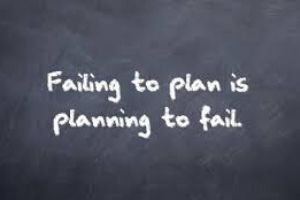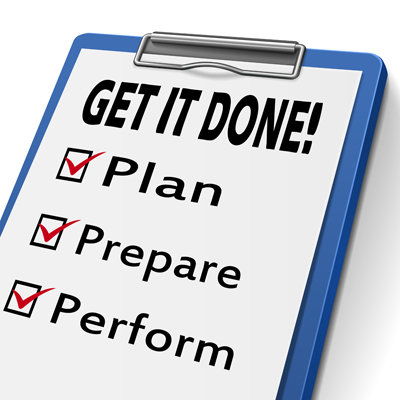How to Create a Development Plan for Sales Employees
Today’s sales candidates have more control over their career opportunities than ever before.
In a skills-short marketplace, countless IT channel companies are competing for the same talent. That means that attracting and retaining employees isn’t as easy as it once was. Today’s staff members expect that if they invest in their employer, their employer must invest in them.
One of the most effective ways that employers can improve their chances of maintaining and keeping the right talent is through development plans.
According to the CMI, every employee should have a personal development plan. The personal development plan is a continuous lifelong process that involves shaping, nurturing and improving knowledge or skills to ensure ongoing employability.
The personal development cycle doesn’t need to be about gaining frequent promotions or pay rises. Instead, your team members want development so that they can improve their performance consistently and reach their targets at every stage of their career.
For employees to feel satisfied and engaged at work, they need their career development plans to align with their development strategy.
The question is, how do you implement the right development solutions in your sales organisation?
Why Do You Need Development Plans?
In today’s IT Sales market, finding exceptional talent is difficult.
Keeping the staff that you have thoroughly engaged and committed to your team is even tougher.
Constantly investing in new development opportunities is one way for businesses to simultaneously help employees reach their full potential and keep them satisfied at work.
A robust development plan keeps your talent pipeline full while giving your organisation a valuable strategy for retention. Your team members will discover more opportunities where they can develop their skills and advance their careers. At the same time, your company benefits from people with expanded skillsets who can give you an edge over the competition.
Benefits of development plans include:
- Stop Employee Stagnation
As creatures of habit, people automatically follow patterns in their day-to-day lives. Some of these patterns will be good for your business, but others may prevent your employees from thinking outside of the box when it comes to engaging their creative side.
Development plans shake things up by keeping your staff members focused on the future. During training or mentorship sessions, your team members will discover new strengths and new perspectives that they can use for the benefit of your organisation.
- Improve Your Understanding of your Employees
As managers spend more time training with their employees and engaging in one-on-one development sessions, they’ll learn more about the strengths and weaknesses of the people in their team. This helps with future decisions regarding delegation, and also allows leaders to see where their people need support.
A strong understanding of your team is crucial in a growing space like sales. As new trends and possibilities appear in the industry, you’ll know which of your employees are ready to adapt. This means that you’re more likely to maintain a competitive edge over other companies in your sector.
- Maintain Engagement and Employee Satisfaction
A frequently-quoted statistic from Gartner claims that only 33% of the workforce are “engaged” at work. Engaged employees reach their goals faster, and deliver better, more efficient work. One of the best ways for employers to boost engagement is by offering opportunities for professional development.
If your team members feel inspired and supported at work, they’ll naturally begin to feel more productive. What’s more, because your people will be moving through their development cycles, they’ll feel as though their job is allowing them to achieve their goals in life, leading to greater feelings of satisfaction.
- Attract and Retain More Talent
One of the biggest benefits of a development plan is its ability to attract and retain the right talent. While a specialist recruitment team can deliver exceptional candidates to your door, it’s still up to you to create an employer brand that makes people want to accept your job offer and become a part of your team.
With a development plan, you show potential employees that you’re invested in unlocking their real potential. Your people will feel as though they’re getting more from you than just a paycheck.
What’s more, employees who learn together with the support of their business leaders start to gain a sense of camaraderie and commitment to the business. The investments you make into development plans may mean that your people stay with you for longer.
What is a Career Development Plan?
A personal development plan is a consistent cycle of personal growth and improvement.
A career development plan builds on that process of internal evolution, focusing on the acquisition of skills that are useful to a specific IT channel role.
Since every employee is different, each member of your team will define their career development plan with unique goals and expectations. The key is to create a strategy that benefits both the employee and the employer at the same time.
As mentioned above, supported and engaged employees are more motivated, and often perform better at work. As a result, employers benefit from a more committed team and higher levels of performance.
Some of the most common areas covered in a career development plan include:
- Technical skills
- Training updates
- Leadership and management skills
A focused development plan provides sales employees with clear direction on how to advance their careers and increase their skills. However, these programs can’t be created off-the-cuff, they need to be carefully structured to suit the needs of each staff member.
What Should a Sales Development Plan Include?
No two development plans are alike, because every employee has distinct strengths and weaknesses to consider. Career development plans follow a similar structure to personal development plans. For instance, the process will include:
- Establishing clear aims and objectives
- Assessing current realities (where the employee is now)
- Identifying the need for specific skills and competencies (what your employee needs to get to wherever they want to be)
- Selecting appropriate activities to correspond with staff member needs (arranging training or mentorship opportunities).
To start designing an effective IT Channel development plan, make sure that you:
- Consider the Goals of the Business
Before you begin to set objectives for your team members, make sure that you understand what your company needs. For instance, are you keen to cultivate new leadership skills in your existing employees, or help them understand the latest technology?
Once you know your organisation’s goals, you can begin to identify the necessary competencies, skills, and knowledge that will allow you to reach your targets.
If your business is going through a period of growth, then it’s likely that you’re going to need leaders to manage any new employees you hire in the years to come. Those leaders may need to understand new concepts like AI, machine intelligence, and automation, and how they relate to your company. This means you’d need development strategies that teach both leadership skills and provide insights into technology.
Development plans save you time on recruiting and onboarding outsiders, by giving you access to more senior talent within your team. Though these plans won’t eliminate the need for a great recruitment strategy, they may allow you to leverage more of your team’s true potential.
- Speak to Your Employees
Once you know what your business needs, it’s important to understand what your employees want to achieve with their development strategies.
Don’t simply assume that you understand your employee’s career aspirations and skill levels. A great way to start building individual employee development plans with your team members is, to begin with, a face-to-face discussion during the onboarding process. Ask:
- What are your career goals and how do you think we can help you accomplish them?
- What are the challenges you think you’ll face in this role?
- How do you plan to assess your progress in your new position?
As your employee continues to grow within your company, you can invite them into “stay interviews” where you can discuss the progress that they’re making in their development plans, and any additional challenges or opportunities they’ve discovered along the way.
- Create an Action Plan
Once you’ve examined your employee’s background, looked at their targets for the future, and aligned each’s development plan with your business goals, you can start putting an action plan in place.
Development plans can come in a wide variety of formats. Some include formal activities like training or working with subject matter experts. Other development plans also include less formal experiences like mentoring, networking, and shadowing other employees.
Consider which solutions will help your team members the most and whether you’ll need to do any prep work to support your people. For instance, will your staff members need time away from work to complete their training?
- Succession Planning
By putting together development plans for your employees, you are also creating a succession plan for your business.
If, for example, your top sales person leaves, instead of a panic and redistribution of accounts, you will already have someone ready to step in to that role. That individual will have a development plan via mentoring, coaching, training & development that will equip them to “hit the ground running” There is also the security of time where there is no need to wait for a 12 week hiring process for this to happen.
- Provide a Schedule and Performance Metrics
Finally, make sure that your employees can see the progress they’re building towards their goals.
It’s often useful to add a timetable or schedule to your employment plan, along with milestones that your team can celebrate along the way. This is a fantastic way to keep people motivated as they work towards their career goals.
Additionally, remember to provide performance metrics that help your employees see how far they’ve come since the beginning of the year or the start of their development plan. For instance, you can highlight the percentage of a course that they’ve completed or show how their performance in a particular area has improved over time.
For instance, one of your employees may have gotten 25% faster at completing their tasks since the beginning of the year and delivered results with 30% better accuracy. Easy-to-understand measurements and regular feedback from managers will be a valuable way to keep your people on track.
How to Create Effective Development Plans
Ultimately, the most important asset your IT Channel business has is its people.
Just like any other resource in your organisation, you need to invest the right amount of time and money into your people if you want them to grow. Without development strategies, your employees may begin to stagnate, lose their motivation and eventually leave your business for another that’s capable of giving them what they need.
Effective career development plans require more than a single training day once per year.
Companies need to consistently support and nurture their talent with a range of strategies. To create great development plans, make sure that you:
- Treat Every Employee as an Individual
As mentioned above, it’s important to sit down with your employees and discuss their career goals and individual interests. During a one-on-one discussion with your team members, you can begin to see which development strategies are best suited to their individual needs. Pushing people into a development plan that doesn’t suit their end-goals won’t provide the motivation and engagement you’re looking for.
While you’re exploring professional opportunities with your team members, you may also find chances for them to expand their skills outside of their role. For instance, cross-training is an excellent way to encourage people to work more effectively with other members of a team, because they’ll understand how every part of the company works together to achieve results. Look at:
- Letting staff members explore specific responsibilities in other roles. For instance, a digital marketing expert can look at what a sales analyst does each day to build their understanding of how marketing leads to conversions.
- Increasing soft skills as well as technical talents: Developing employee communication and networking skills will help them thrive in any role.
- Short skill shelf lives: In today’s fast-moving world, knowledge and skills can quickly become out of date within a matter of months. Make sure that your employees have ways to update their existing knowledge, as well as learning new things.
- Match Learning Options to Learning Styles
There are now five different generations of employees in an average workplace.
With so many diverse staff members in your team, it’s unlikely that everyone will learn using the same techniques and strategies. For example, your millennial employees may prefer to complete training sessions on their smartphones or learn online in their free time. On the other hand, baby boomers may feel more comfortable with face-to-face training or mentorship.
Find the learning strategy that’s best for each member of your team and give them the flexibility to choose how they want to expand their skills.
A good option may be to implement opportunities for cross-generational mentoring. Allowing your team members to inspire and teach each other will support the growth of a robust company culture.
- Recognise Employees and Provide Feedback
The best sales development plans involve a recognition component. Human beings need regular feedback and support to help them grow. If your team members don’t feel like you appreciate the extra work they’re putting into learning; then their motivation will suffer.
Constructive feedback is essential for your employees to grow. If you notice that certain team members aren’t performing as well as others in their training sessions, you might suggest that they try a different learning style, for example.
At the same time, when your people achieve milestones in their education, make sure that they get the rewards and recognition they deserve. A simple “well done” or a team-wide celebration is a great way to make everyone feel more devoted to their development.
- Implement New Skills and Monitor your Employees
Development plans require you to spend a significant amount of time, effort, and potentially money on your team members. To get the best return on investment, make sure that your staff is putting their education to work in their roles.
Set up opportunities that allow your employees to apply their new skills to their position and get feedback. This may mean giving certain team members additional responsibilities so that they can use their knowledge while it’s still fresh.
As your people bring their new talents to the workforce make sure you:
- Constantly monitor their progress and encourage their growth
- Schedule regular meetings to see how their development is going
- Ask for feedback on how they would improve or change their development plans.
Who Is Responsible for Creating Development Plans?
To some extent, it’s the responsibility of any team leader or employer to make sure that their people have the skills they need to thrive. However, your staff members also have a part to play in their growth.
While managers can plan fantastic development opportunities for their employees, the eagerness and dedication of your people will also dictate how successful your strategies can be. An unmotivated or uninterested employee won’t be able to unlock their true potential via training, regardless of how much work a business leader puts in.
Treating Learning as a Shared Responsibility
The best way to promote success in employee development programs is to treat learning as a responsibility that belongs to both managers, and employees.
A great way to make sure that team leaders don’t struggle as much when implementing development programs is to search for a passion for learning in the new candidates you bring into your team. Looking for evidence that your new people have developed their skills in their spare time in the past is a great way to ensure that you’re investing in people who genuinely want to learn.
Consider asking competency-based questions in the interview like, “Tell us about a time when you invested in additional education to achieve your career goals.”
As you bring more learning-focused people into your team, you can begin to develop a company culture around the value of constant improvement and growth. This way, you ensure that your existing employees enjoy the development process they experience in your business. What’s more, your future candidates will know that you expect them to commit to an ongoing education too.
Embrace Learning as a Team
While the various people in your company may take different approaches to their education and career development, growth must feel like a team activity.
Encourage open communication in your workplace where people can tell you what they like and dislike about your training opportunities or make suggestions on how they can improve their education. At the same time, remember to celebrate the individual achievements your people make as a team.
For instance, if one of your sales employees complete a training course with a fantastic grade, bring the entire team together for a celebratory work lunch. This is a tremendous way to show your people that their commitment to training isn’t just good for their future, it benefits the rest of the workforce too.
Don’t Underestimate the Development Plan
Today, most business leaders understand that development plans are an essential part of keeping their team members on the “cutting edge.” For employees to thrive in an ever-evolving and competitive marketplace, they need the support of their employers.
According to research from Bersin, career development programmes are one of the best ways for organisations to drive performance, as they drive 30% greater results.
Development plans are a win-win opportunity, where your team members can achieve their personal and career goals while giving your business access to additional skills and efficiency.
The more you invest in learning and development , the more you position your company to drive crucial results, increase innovation and improve employee engagement.









